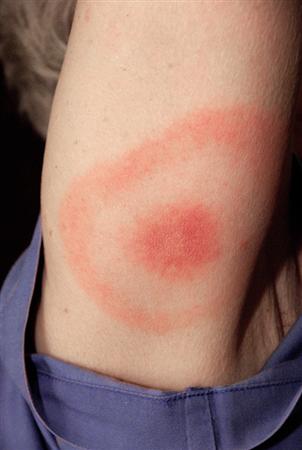Lymecare Alliance: Attaching People with Essential Treatment Choices
Lymecare Alliance: Attaching People with Essential Treatment Choices
Blog Article
Lyme Disease Understanding-- Know the Manifestations and Stay Protected
Lyme illness continues to be a significant public health and wellness worry, specifically in areas where ticks are common. What certain steps can individuals take to guard themselves versus this often-overlooked disease, and how can areas boost their general action?
Understanding Lyme Condition
Lyme condition, a common tick-borne ailment, is created by the microorganism Borrelia burgdorferi. This illness is largely transferred to people with the bite of infected black-legged ticks, typically known as deer ticks. The geographical circulation of Lyme condition is greatly concentrated in the northeastern, north-central, and Pacific seaside regions of the United States, although instances have been reported in other areas also.
The life cycle of the tick plays an essential function in the transmission dynamics of Lyme illness. Human exposure to ticks is specifically raised in verdant or wooded locations, especially during warmer months when ticks are most energetic.
Understanding the ecology of Lyme condition is necessary for efficient prevention approaches. Recognition of tick environments and habits can substantially decrease the chance of bites. Public education and learning on proper tick removal methods and the relevance of individual safety steps can aid alleviate the danger of contracting this complex and potentially devastating health problem.
Usual Signs to Acknowledge
Recognizing the usual symptoms of Lyme illness is vital for early diagnosis and treatment. The initial manifestation frequently includes a particular skin rash referred to as erythema migrans, which looks like a red circular spot with a main clearing up, looking like a "bull's- eye." This breakout typically develops within 3 to one month after a tick bite and can differ in dimension.
In enhancement to the rash, people may experience flu-like signs and symptoms, consisting of high temperature, chills, exhaustion, muscle pains, and joint pain. These signs can be deceptive, as they are usual to lots of other illnesses. If left untreated, Lyme disease can progress to a lot more severe indications, consisting of neurological concerns such as meningitis, facial palsy, or cognitive disabilities.
Prompt treatment can protect against the progression of the condition and reduce the danger of lasting problems. Alertness is key in determining and addressing the signs and symptoms connected with Lyme disease.

Danger Elements and Transmission
Understanding the risk aspects and settings of transmission connected with Lyme condition is important for effective avoidance. Lyme disease is mainly sent with the bite of contaminated black-legged ticks, frequently called deer ticks. These ticks thrive in wooded, verdant, and brushy locations, making outside tasks in such atmospheres a substantial threat factor for transmission.
Individuals who participate in exterior recreational tasks such as horticulture, hiking, or outdoor camping are more probable to experience these ticks. In addition, staying in or visiting regions where Lyme illness is endemic, including components of the northeastern, north-central, and Pacific seaside areas of the United States, enhances direct exposure threat. Specific professions, such as agriculture, landscape design, and forestry, additionally pose enhanced dangers because of extended outdoor direct exposure.
Furthermore, the life process of the tick, which needs details environmental conditions, impacts transmission dynamics. Aspects such as environment modification, which influences tick populaces and environments, can even more worsen threat. Understanding these aspects is vital for people to recognize their potential exposure and take needed preventative measures to decrease their danger of having Lyme illness.
Efficient Avoidance Techniques
Consistently applying effective prevention strategies is vital for lowering the threat of Lyme condition. The first line of defense is to avoid locations understood for high try these out tick populaces, particularly wooded and verdant atmospheres. When exterior activities are inevitable, wearing protective apparel is essential. Long sleeves, long pants, and tightly woven fabrics can aid lessen skin exposure. Furthermore, light-colored apparel makes it easier to find ticks.

Informing household and friends about these prevention methods promotes neighborhood recognition and watchfulness, more lowering the possibility of Lyme condition transmission. By taking on these actions, individuals can efficiently safeguard themselves from the dangers associated with Lyme disease.
Relevance of Very Early Discovery
Early detection of Lyme condition significantly affects therapy results and can avoid the progression of the illness - Lymecare Alliance. The onset of Lyme condition are typically noted by flu-like symptoms, consisting of fever, tiredness, and the characteristic erythema migrans rash. Acknowledging these signs quickly permits prompt intervention, which commonly includes a program of prescription antibiotics. When dealt with early, many individuals recoup completely without long-term complications.
On the other hand, postponed diagnosis can bring about much more severe manifestations of the illness, including heart and neurological complications, which can be much more challenging to deal with and might cause prolonged health problems. Late-stage Lyme condition might require extensive antibiotic therapy and can cause persistent symptoms, significantly influencing lifestyle.
Generally, boosting understanding around the early indicators of Lyme illness is essential for efficient monitoring and prevention of even more major health repercussions. Early intervention is not just advantageous for the private but also important in reducing the general concern of Lyme important site condition in the area.
Verdict
In summary, increasing recognition of Lyme Illness is important for promoting early discovery and effective avoidance. Eventually, a cumulative effort to remain educated and vigilant versus Lyme Illness can enhance area health and wellness and reduce the effect of this possibly serious disease.
Lyme disease remains a significant public health problem, particularly in areas where ticks are widespread.The life cycle of the tick plays a vital duty in the transmission dynamics of Lyme official statement illness.Comprehending the threat factors and settings of transmission associated with Lyme illness is vital for reliable avoidance. Lyme disease is primarily transferred via the bite of contaminated black-legged ticks, typically understood as deer ticks. Understanding these factors is critical for individuals to acknowledge their prospective exposure and take essential safety measures to decrease their danger of having Lyme illness.
Report this page